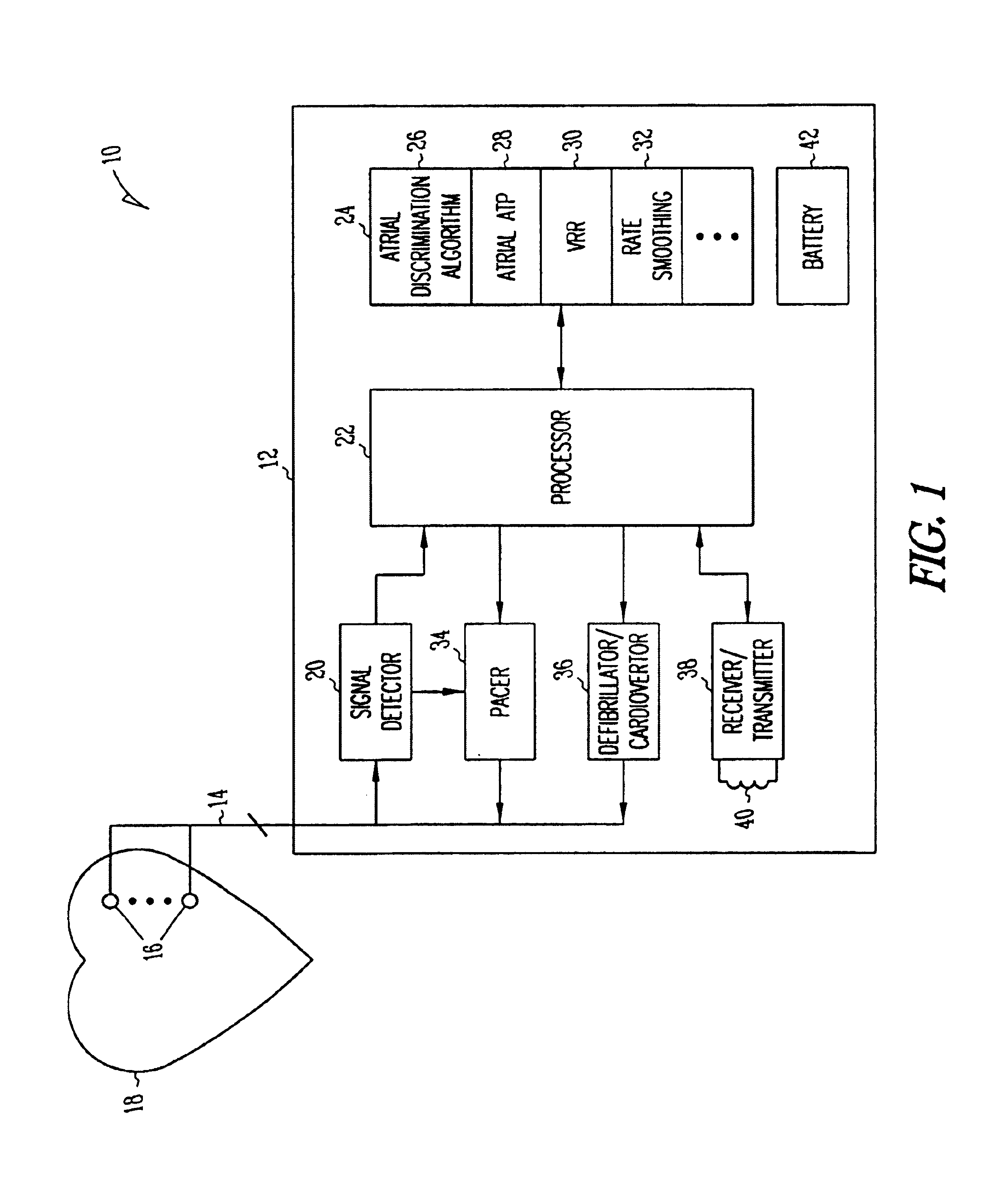Method and apparatus for using atrial discrimination algorithms to determine optimal pacing therapy and therapy timing
a technology of atrial discrimination and therapy timing, applied in the field of medical devices, can solve the problems of excessive ventricular rate, too rapid ventricular pacing, and the response of current bradycardia pacemakers and similar implantable cardiac devices to detected supraventricular tachycardia
- Summary
- Abstract
- Description
- Claims
- Application Information
AI Technical Summary
Benefits of technology
Problems solved by technology
Method used
Image
Examples
Embodiment Construction
[0020]An exemplary implantable cardiac device 10 incorporating a system and method for using atrial discrimination algorithms to determine optimal pacing therapy in accordance with the present invention is illustrated in, and will be described in detail with reference to, FIG. 1. The implantable cardiac device 10 includes a hermetically sealed canister 12 which encloses circuitry for detecting and analyzing cardiac arrhythmias and for providing therapy therefore, as will be discussed in more detail below. The circuitry within the canister 12 is connected via one or more leads 14 to one or more electrodes 16 which are implanted in or near the chambers of a patient's heart 18. Depending upon the specific application and functionality of the implantable cardiac device 10, electrodes 16 may be positioned in or near the ventricles, atria or, preferably, both the atria and ventricles of the heart 18. The electrodes 16 pick up electrical signals produced in the chambers of the heart 18 and...
PUM
 Login to View More
Login to View More Abstract
Description
Claims
Application Information
 Login to View More
Login to View More - R&D
- Intellectual Property
- Life Sciences
- Materials
- Tech Scout
- Unparalleled Data Quality
- Higher Quality Content
- 60% Fewer Hallucinations
Browse by: Latest US Patents, China's latest patents, Technical Efficacy Thesaurus, Application Domain, Technology Topic, Popular Technical Reports.
© 2025 PatSnap. All rights reserved.Legal|Privacy policy|Modern Slavery Act Transparency Statement|Sitemap|About US| Contact US: help@patsnap.com



